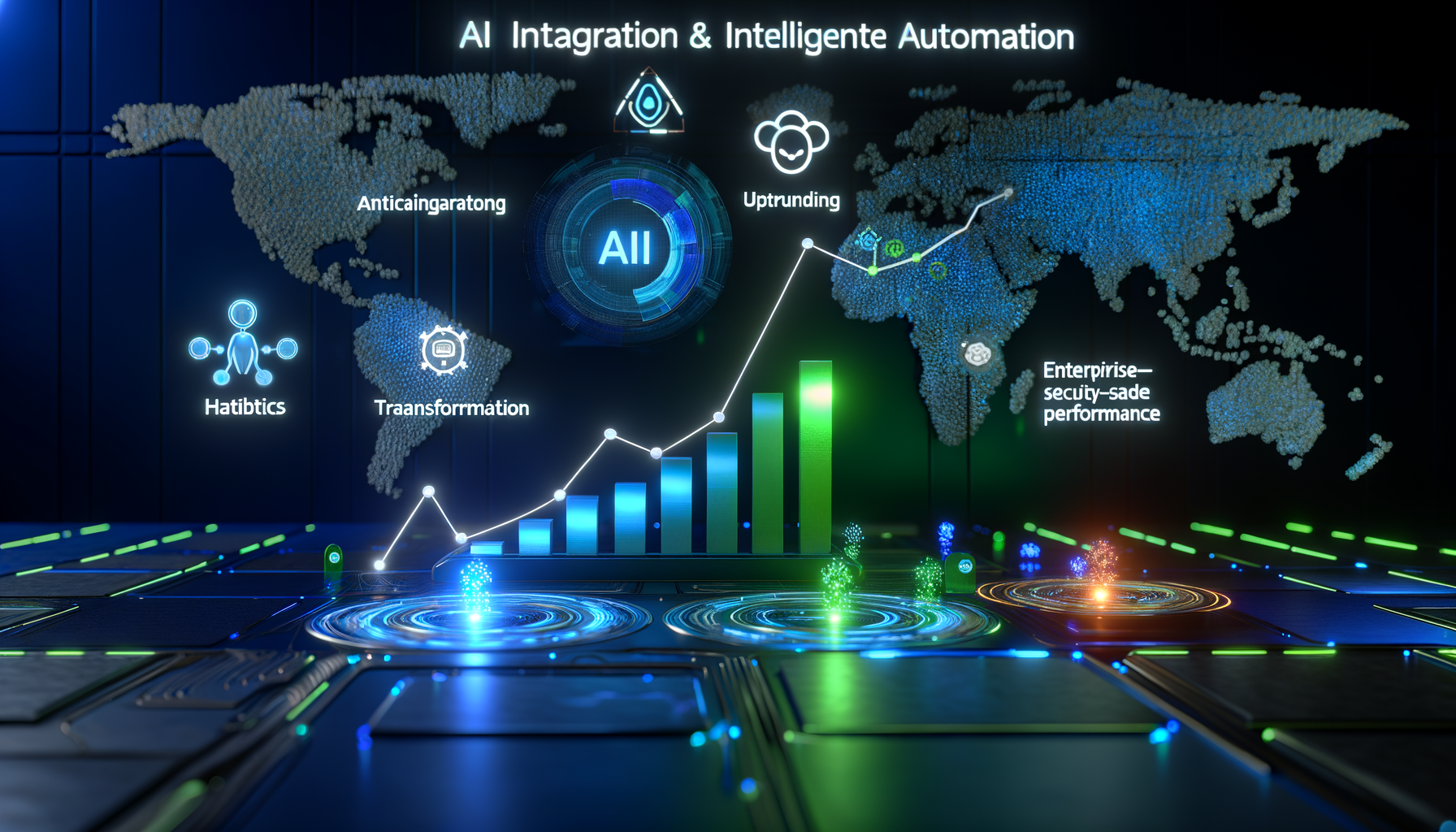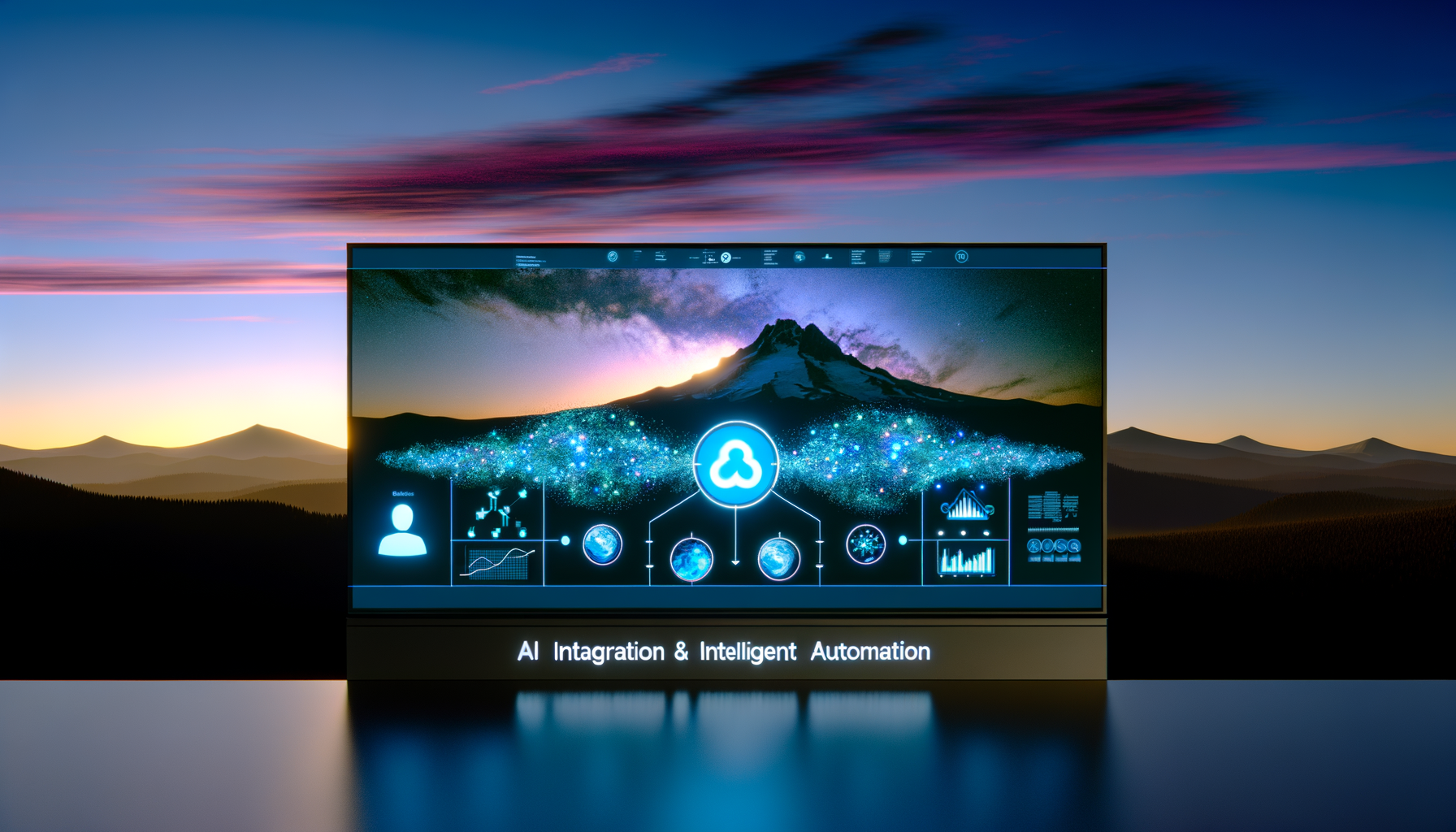Are your legacy systems holding your business back from reaching its full potential? According to a 2023 Gartner report, companies that have embraced AI integration and intelligent automation see up to a 40% increase in operational efficiency. In this guide, we'll unravel the magic behind these technologies, setting you on a path to not just compete but lead in your industry.
Understanding AI Integration

Code-review collaboration on AI integration project.
AI integration involves embedding AI capabilities into your existing systems to enhance their functionality. This is not just about adopting new technologies but transforming how your business operates.
Successful AI integration requires a strategic approach. Consider the areas where AI can provide the most value and start there. Whether it's streamlining customer service with chatbots or optimizing supply chain logistics, the opportunities are vast.
At Quicklook, we've seen firsthand how AI integration can transform businesses. For example, a regional retailer increased their inventory accuracy by 30% by integrating AI-powered analytics into their legacy systems.
LIST
- •Identify high-impact areas
- •Select the right AI tools
- •Pilot and scale
The Role of Intelligent Automation

Diagram showing cloud migration with intelligent automation.
Intelligent automation combines AI and automation to perform tasks with minimal human intervention. It's about automating complex business processes that require decision-making capabilities.
Think of intelligent automation as the next step beyond traditional RPA (Robotic Process Automation). While RPA handles repetitive tasks, intelligent automation can process unstructured data and learn from interactions.
Quicklook's multi-agent systems are designed to enhance intelligent automation, making them smarter and more adaptable to changing business environments.
QUOTE
Intelligent automation is not just a tool; it's a strategic asset for any forward-thinking organization.
Implementing AI-Driven Automation
Step-by-Step Guide

Flowchart of AI-driven automation implementation.
Start with a clear objective. What do you want to achieve with AI-driven automation?
Next, map out the processes that can benefit from automation and assess their current performance.
Choose the right AI tools and platforms. Look for solutions that offer flexibility and scalability, such as Quicklook's customizable AI systems.
LIST
- •Define objectives
- •Map processes
- •Select AI tools
- •Implement and iterate
Real-World Benefits & Case Studies

Analytics graph showing uptrending performance metrics.
Businesses that have successfully integrated AI and intelligent automation report significant improvements in efficiency and customer satisfaction.
For instance, a manufacturing client of Quicklook reduced production downtime by 25% through predictive maintenance powered by AI.
In the finance sector, intelligent automation has enabled faster transaction processing and enhanced fraud detection capabilities.
CALLOUT
Quicklook's AI solutions deliver measurable results across industries.
Addressing Security & ROI Concerns

Security audit team reviewing AI system compliance.
Security is a top concern when integrating AI into business operations. Ensure your AI systems comply with enterprise security standards and are regularly updated.
Calculating ROI from AI integration involves measuring both direct financial gains and indirect benefits such as improved customer experience and operational efficiency.
At Quicklook, we provide comprehensive support to ensure your AI integration is secure and delivers the expected ROI.
LIST
- •Prioritize security
- •Measure direct and indirect ROI
- •Continuously optimize
Frequently Asked Questions
QWhat are the latest trends in AI integration and intelligent automation for 2025?
QHow can businesses effectively implement AI-driven intelligent automation?
QWhat are the benefits of combining AI integration with intelligent automation in modern enterprises?
Conclusion
AI integration and intelligent automation offer transformative potential for modern enterprises.
Future Vision
As AI technology advances, the scope for automation will only expand, making now the perfect time to act.
Schedule your AI audit with Quicklook.
